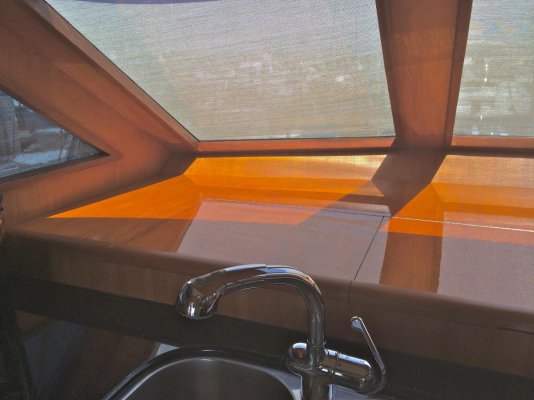If you have trouble with refinishing the existing teak, try a 1/8" teak plywood.
I have tried veneer, but it is almost impossible to press in that application, and without being pressed, it is almost impossible to get it to lie perfectly flat. 1/8" plywood, OTOH, is already pressed. All you need to do is cut it accurately and fit it into the space. Even if you only cover the stained teak below the formerly leaking window and leave the edge proud yo will have a vast improvement over the present staining.
For finishing, as noted above, shellac (shell lacquer) is a methanol based product, so any moisture will leave stains. French Polishing is a shellac finishing method, so great for your piano, provided you keep guests from putting their drinks down on it, but not a good idea on a boat.
A good poyurethane or an oil based varnish will give you a good, durable finish.
I once tried a water based varnish, with disastrous results. Stick with oil based.



